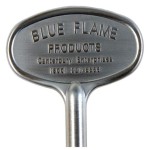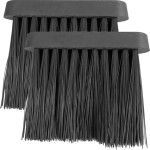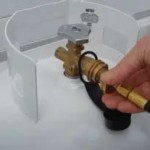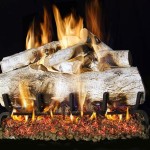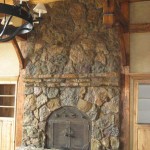Understanding Fireplace Vent Caps: Purpose, Types, and Maintenance
Fireplace vent caps, often overlooked, play a crucial role in the safe and efficient operation of a fireplace. These protective covers sit atop the chimney, shielding the flue from external elements and preventing unwanted intrusions. A properly functioning vent cap is essential for maintaining indoor air quality, preventing fire hazards, and ensuring the longevity of the chimney structure itself.
This article provides a comprehensive overview of fireplace vent caps, exploring their primary functions, the various types available, factors to consider when selecting a vent cap, and essential maintenance practices. Understanding these aspects empowers homeowners to make informed decisions about their fireplace system and ensure a safe and enjoyable experience.
Key Functions of a Fireplace Vent Cap
The primary function of a fireplace vent cap is to protect the chimney flue from external elements. Rain, snow, and debris can enter the chimney without a cap, leading to a multitude of problems. Excess moisture accelerates the deterioration of the chimney's interior, causing cracks and structural damage. Debris such as leaves, twigs, and animal nests can obstruct the flue, hindering proper ventilation and potentially leading to dangerous carbon monoxide buildup within the home.
Furthermore, vent caps act as a barrier against animals such as birds, squirrels, and rodents. These animals often seek shelter in chimneys, building nests that can block the flue and create fire hazards. In some instances, animals can become trapped within the chimney, causing unpleasant odors and requiring professional removal.
Finally, a well-designed vent cap can also improve the draft of the fireplace. By strategically directing airflow, the cap can prevent downdrafts and ensure that smoke is efficiently expelled from the chimney, minimizing the risk of smoke entering the living space.
Types of Fireplace Vent Caps
Fireplace vent caps are available in a variety of materials and designs, each offering specific advantages and disadvantages. The selection of an appropriate vent cap depends on factors such as the chimney's size, shape, and material, as well as local weather conditions and potential animal intrusions.
Single-Flue Vent Caps: These are the most common type of vent cap and are designed for chimneys with a single flue. They typically consist of a mesh screen surrounding the flue opening, preventing debris and animals from entering while allowing for proper ventilation. Single-flue vent caps are generally the most affordable option and are suitable for most standard fireplaces.
Multi-Flue Vent Caps: Chimneys with multiple flues require a specialized vent cap that covers all the flues simultaneously. These caps are larger and more complex in design than single-flue caps, often featuring separate compartments for each flue to prevent cross-contamination of exhaust gases. Multi-flue vent caps are essential for chimneys serving multiple appliances, such as a fireplace and a furnace.
Decorative Vent Caps: Beyond their functional purpose, vent caps can also enhance the aesthetic appeal of a home. Decorative vent caps are available in various styles, including those that mimic traditional chimney crowns or feature ornate designs. While decorative caps can add a touch of elegance to a home, it is crucial to ensure that they do not compromise the cap's primary function of protecting the flue.
Rain Pans: A rain pan is not a vent cap on its own, but it serves as a crucial support for many vent caps. It's a metal sheet placed on top of the chimney crown, providing a flat, stable surface for the vent cap to rest on. This prevents water from seeping into the chimney's brickwork and causing damage. When choosing a vent cap, consider whether your chimney needs a rain pan and ensure compatibility.
Top-Mount Vent Caps: These vent caps typically do not sit directly on the flue. Instead, they are mounted on the chimney crown itself. This type is often used when the flue tile extends above the crown or when a more secure installation is desired. They offer excellent protection against rain and animals and can be more aesthetically pleasing than direct-mount caps.
Wind-Resistant Vent Caps: In areas prone to strong winds, a standard vent cap may not suffice. Wind-resistant vent caps are designed to deflect wind and prevent downdrafts, ensuring consistent draft performance even in adverse weather conditions. These caps often feature a specialized design that minimizes wind resistance and prevents the backflow of exhaust gases.
The materials used in vent cap construction vary, with stainless steel, copper, and galvanized steel being the most common. Stainless steel offers excellent corrosion resistance and durability, making it a popular choice for harsh climates. Copper vent caps provide a unique aesthetic appeal and naturally resist corrosion. Galvanized steel is a cost-effective option, but it may be less durable than stainless steel or copper.
Selecting the Right Fireplace Vent Cap
Choosing the appropriate fireplace vent cap requires careful consideration of several key factors. Neglecting these factors can result in a poorly functioning cap that fails to adequately protect the chimney or even hinders proper ventilation.
Chimney Size and Shape: The vent cap must be appropriately sized to fit the chimney flue. Measure the flue's diameter or dimensions to ensure a proper fit. For chimneys with multiple flues, ensure the vent cap is designed to cover all openings adequately. The shape of the flue also plays a role; round flues require round vent caps, while square or rectangular flues require corresponding shapes.
Material: Select a vent cap material that is appropriate for the local climate and budget. Stainless steel offers the best combination of durability and corrosion resistance, while copper provides a unique aesthetic appeal but comes at a higher cost. Galvanized steel is a budget-friendly option but may require more frequent replacement in harsh environments.
Mesh Size: The mesh size of the vent cap's screen is crucial for preventing animal intrusions. A mesh size of 3/4 inch or smaller is generally recommended to exclude most birds, squirrels, and rodents. However, a very fine mesh can restrict airflow, so it is essential to strike a balance between animal protection and ventilation.
Local Building Codes: Consult local building codes and regulations to ensure that the selected vent cap meets all applicable requirements. Some jurisdictions may have specific regulations regarding vent cap design, materials, or installation practices.
Professional Advice: Consulting with a qualified chimney sweep or fireplace technician can provide valuable guidance in selecting the right vent cap for a specific situation. These professionals can assess the chimney's condition, identify potential challenges, and recommend a suitable vent cap that meets the homeowner's needs and budget.
Vent Cap Installation and Maintenance
Proper installation and maintenance are essential for ensuring the vent cap's long-term performance and effectiveness. A poorly installed or neglected vent cap can fail to adequately protect the chimney and may even pose a safety hazard.
Installation: While some homeowners may be tempted to install a vent cap themselves, it is generally recommended to hire a qualified professional. Proper installation ensures a secure fit and prevents leaks or other problems. A professional installer will have the necessary tools and expertise to safely and effectively install the vent cap, adhering to all applicable building codes and regulations.
Regular Inspections: Inspect the vent cap regularly, ideally at least once a year, to check for damage or obstructions. Look for signs of rust, corrosion, or physical damage to the cap's structure. Clear away any debris such as leaves, twigs, or animal nests that may be obstructing the screen.
Cleaning: Clean the vent cap periodically to remove soot, creosote, and other deposits that can accumulate over time. Use a brush or vacuum cleaner to remove loose debris from the screen. For more stubborn deposits, a mild detergent and water solution may be used. Ensure the vent cap is thoroughly dry before reinstalling it.
Professional Chimney Sweeping: Regular chimney sweeping is essential for maintaining the overall health of the fireplace system. A professional chimney sweep will inspect the vent cap during the sweeping process and address any issues that may be identified. They can also provide recommendations for vent cap replacement or repair if necessary.
Animal Removal: If animals have become trapped in the chimney despite the vent cap, it is crucial to contact a professional animal removal service. Attempting to remove the animals yourself can be dangerous and may result in injury. A professional animal removal service will have the necessary equipment and expertise to safely and humanely remove the animals from the chimney.
By understanding the functions, types, selection criteria, and maintenance requirements of fireplace vent caps, homeowners can ensure the safety, efficiency, and longevity of their fireplace systems. Regular inspections and maintenance, along with professional advice, will contribute to a positive and worry-free fireplace experience.

Duravent Direct Vent Pro Horizontal High Wind Rain Cap Rockford Chimney

Termination Cap Cover For Direct Vent Fireplace Draft Stopper

Termination Cap Cover For Direct Vent Fireplace Draft Stopper

Termination Cap Cover For Direct Vent Fireplace Draft Stopper

Vent Pipe Cap With Storm Collar For Sl11 Series Fireplace Fine S Gas

Vent Cover Set 9x80 Cm 3x For Fireplace With Straight Glass Pane Kratki

Termination Cap Cover For Direct Vent Fireplace Draft Stopper

Direct Vent Gas Fireplace Termination Cap Cover Option One

Myg Magnetic Fireplace Draft Stopper Cover To Block Cold Air From Vent Prevent Heat Loss Magnet Screen Indoor Chimney Blocker Covers 36 X 6

Chimney Cap For 8dm Series Vent Pipe Fine S Gas




